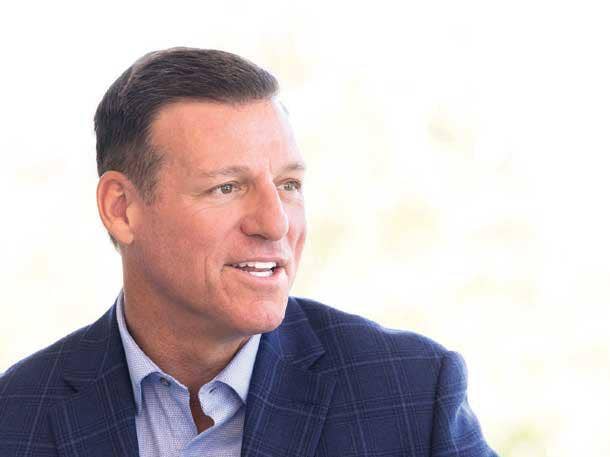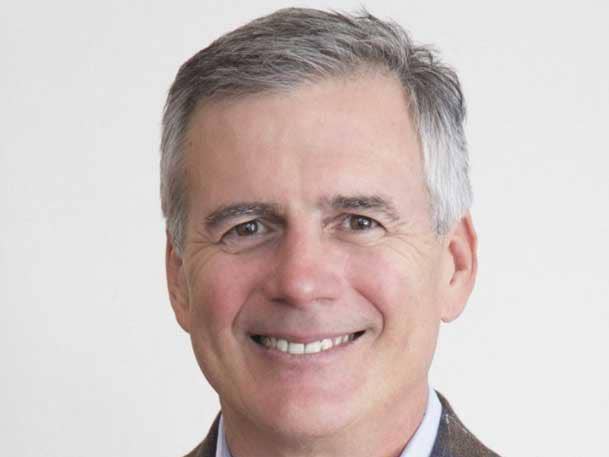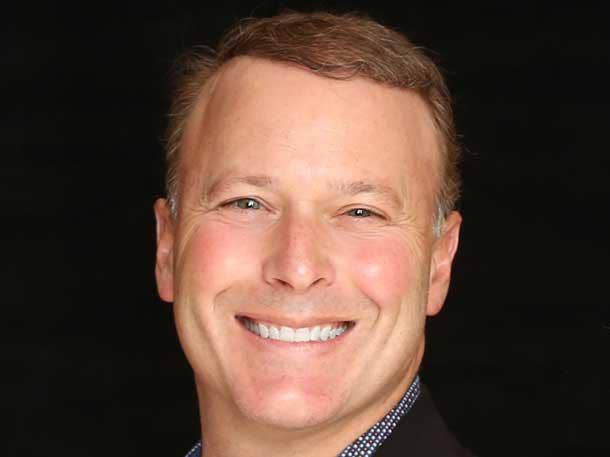Ingram Micro, TD Synnex, D&H CEOs On The 2023 Economic Outlook
The top executives from three major IT distributors, in exclusive conversations with CRN at the recently-concluded Global Technology Distribution Council summit, say that the distribution model protects them—and the IT industry in general—from such macroeconomic headwinds as inflation and a potential recession.

Not Feeling The Headwinds
The multibillion-dollar IT distribution industry plays a key role in deploying IT. Sure, distributors are well-known for their ability to bring products and services from vendors to solution providers, and to help finance the sale of those products and services through to the final users. But their roles have expanded over the years to include ever-more sophisticated services around configuring and deploying IT solutions and aggregating multi-vendor solutions.
The evolution in IT distribution’s services capabilities has given distributors a unique role to play during economically challenging times. Rather than be buffeted by cyclical changes in supply and demand caused by macroeconomic changes such as inflation or the global COVID-19 pandemic, IT distributors have evolved not only to thrive in trying times, but to act as a buffer against trying economic times for channel partners and their customers. They do this by continually updating their focus based on customer needs, adding or subtracting capacity as product requirements change and developing new services to smooth out the ripples caused by the move from IT feast or famine and back again.
For instance, said TD Synnex CEO Rich Hume, in a recession, it’s important to understand that, regardless of the economic cycle, within IT there’s always value.
“We’re privileged to have a very large portfolio,” Hume said. “And as economic cycles impact some of those areas, and perhaps not others, we have the opportunity to make sure we’re transitioning our sales engagement or energy to where there is demand. So I think it‘s really important to recognize that large portfolios, be it geographic or offering, are things that help to insulate a little bit as opposed to being concentrated in one area or the other.”
CRN sat down at the recently concluded Global Technology Distribution Council (GTDC) with the top executives of three of the IT industry’s top distributors, including Hume, Ingram Micro CEO Paul Bay, and D&H Co-president Dan Schwab, to talk about three of the top macroeconomic headwinds that could impact the IT industry:
* How might inflation impact IT distribution and the industry as a whole.
* The potential impact should a long-expected recession hit the global economy.
* Whether uncertainties from a potential move by the U.S. Congress to not raise the debt ceiling could impact IT.
To learn more about the potential impacts from these macroeconomic issues and the role IT distributors play in smoothing out the impacts, click through our slideshow.

Ingram Micro CEO Paul Bay
Distribution’s Role In Inflationary Times
Paul Bay, Ingram Micro
In distribution, because of our size, we have a lot of variability. So we can turn the dials up and down based on supply and demand, inflationary challenges whether it‘s freight that everybody’s had to deal with or general inflation and labor rates, and whatnot. So we‘re able to figure out how we automate and make sure that we’re driving efficiencies and are able to offset as best as possible any of the things we can‘t control from an inflationary perspective. And we’re also making sure that we’re balancing the dials that we can turn because of the flexibility we have with our operating expenses. So the variability allows us to crank things up when things start going and wind it down a little bit when it‘s not.
[For example, our warehouse has] a lot of temp labor so we can scale up very quickly based on what‘s going on from a supply chain perspective, making sure that we look at the most effective way to ship products from the vendor to when it’s actually delivered, and is there a more cost-effective way to deliver, maybe not onesies or twosies, but is there some consolidation in how you‘re holding products to make sure that you’re minimizing the costs associated with doing business.
Rich Hume, TD Synnex
Obviously, inflation manifests itself in your cost structure. So although the timing might not be perfect, we look, as do most industries in most areas right now, to pass on any inflationary increases through our pricing. And as I said, although the timing isn‘t simultaneous, we have the opportunity to keep up with it. And I think probably the way of demonstrating how that might work is to just look at the last year. I mean, inflation was prevalent in the last year, and for the most part, our margin profiles were maintained. I think the thing that is more concerning for us on inflation would be the impact it has on the macro in the slowing of the economy. And that’s the real uncertainty as to what‘s in front of us.
Dan Schwab, D&H
I would bifurcate that response. We saw component-level inflation during COVID due to supply chain challenges and demand far outpacing supply. It has since then reversed, and many of those products have now decreased in price. Vendors have made pricing adjustments. So the inflation of products is no longer factual. You then go to the macroeconomic, which is the inflation that consumers and businesses face with higher freight costs, higher borrowing costs whether it’s a home mortgage or business lending, and wage and pay inflation. And I think all of those are here to stay. I think most businesses have had to, or need to, respond effectively. So whether it‘s managing your freight costs more effectively, managing your invested capital more effectively, those increases don’t go backwards. Maybe inflation declines, but it doesn‘t ever go back to where it was.
So you now have these increased costs that you have to manage effectively. That‘s something that we’re very proud of. We‘ve managed it effectively, and we’ve helped our partners do that by improving the supply chain between the manufacturer, us, and our partners. … We’re now taking steps out of the equation to make the chain more efficient. And I think that‘s part of how everything has evolved. Instead of the vendor does this, the distributor does this, and the reseller does this, those lines have blended and we’ve had to open books conversations to figure out who does what best and how do we leverage each other. And I think that’s really, really positive for the channel.

TD Synnex CEO Rich Hume
Distribution’s Role In A Recession
Rich Hume, TD Synnex
It’s coming. It’s not coming. It may be coming. We know a couple of things for sure. Interest rates are going up. Inflation is beginning to decline. The Fed does not like the fact that the job market is so hot. And so there‘s a lot of dynamics going on. We say we try to stay away from being economists, because that’s not our profession.
[If there is a recession], the first thing you have to have an appreciation for is that, regardless of the economic cycle, within IT there‘s always value and there are always categories of areas that are in demand under any circumstance. The first important thing is, we’re privileged to have a very large portfolio. And as economic cycles impact some of those areas, and perhaps not others, we have the opportunity to make sure we‘re transitioning our sales engagement or energy to where there is demand. So I think it’s really important to recognize that large portfolios, be it geographic or offering, are things that help to insulate a little bit as opposed to being concentrated in one area or the other. The second thing is, the market in total has a set of technologies that have better growth attributes: cloud, analytics, IoT, cybersecurity, hyperscale infrastructure. We‘re really making sure that we’re doubling down on those areas that will have greater than the average growth of IT. And then third, like every other business, you start to take preventative and precautionary measures in making sure that you‘re very conscientious about controlling costs or discretionary spending, and then being a bit more cautious as it relates to resource increments.
Dan Schwab, D&H
I don‘t have a crystal ball to speak about the recession. I think economists were created to make weathermen look good. I think none of us know. But I would say within our industry, I don’t believe there‘s a recession at all. In fact, I believe that some categories maybe overswung the pendulum during COVID and now maybe have a rebalancing. But generally speaking, IT is so pervasive in our personal and professional lives that we continue to invest more there, are not less. So the whole learning from home, work from home, hybrid workforce, requires more technology. Whether it’s endpoints, whether it‘s the network, whether it’s the cloud, whether it‘s new opportunities for service providers from a security standpoint, none of that goes backwards. So I believe when companies are looking at their costs, they’re actually leaning in more on technology because they‘re using that to take costs out of the equation, differentiate themselves from their competitors, or optimize their workforce. And I don’t think there‘s any recession in IT. If anything, I’ve never been more bullish. I think it’s going to be the golden years for technology opportunities for the next five or 10 years.
Paul Bay, Ingram Micro
I‘m not an economist. And you can tell that the people that are the experts don’t necessarily agree either. So we‘re looking at it really from what are the business outcomes that the solution providers need and where the opportunities are from an end user perspective. I think one of the key elements we need to focus on, and you’ve heard us and others talk about it, is what‘s the opportunity for solution providers to find areas to free up and allow them to invest in the future. And so part of that is really understanding those end users and where those opportunities are, with those end users, to help be a better business partner. [At GTDC, you heard the University of Denver CIO] talking about, ‘Look, I’m not going to just rip out what I have today. But I need to figure out how I can free up what I‘m using today more cost effective, so I can invest in the future.’
We‘re really focused around what we’ve done around digital and making that experience a focus on the customer. We‘re still from a cloud standpoint making investments in cloud. And then the whole circular economy with our IT asset disposition of products so that as your products are coming out, how to recycle and repurpose and reuse that technology. So we’re focusing on the growth areas. You heard [here] there is no budget for security because nobody’s going to allow security to bring a company down. Externally we’ve heard different growth rates, but we‘re still seeing solid demand from a cloud perspective, and we’re still seeing in as-a-service more and more looking to go from the capex to the opex model, so how can we help facilitate that?

D&H Co-president Dan Schwab
Potential Impact From A Failure To Raise The Debt Ceiling
Dan Schwab, D&H
Generally speaking, D&H focuses on what we can control within our four walls. So we don‘t have input on what Congress decides to do. I think we look at it as, we are nimble and flexible that when macroeconomic changes happen, we typically pivot faster than anyone else to help our partners and vendors navigate it. I don’t believe there will be a default. I think that obviously there‘s a lot of little political posturing going on. We’ve heard this in the past. And my belief is that sound minds win the day. And while they may not agree with each other, both sides want what they believe is best for our country and our economy. And they both probably would agree that that [the U.S. defaulting is] the worst for the economy. So I‘m optimistic that that will be avoided. But again, we still look at it as that we have to be as flexible as possible with what goes on in the world and in our country.
Paul Bay, Ingram Micro
We haven‘t done scenario planning to look what happens if the debt ceiling does or doesn’t get raised. The way we look at it is, and [IDC sees it as well], whatever GDP is going to be, historically, IT spending has been above that. People have to still drive productivity. People are still going to have to make investments in their future, but it just becomes maybe less or more concentrated. So we want to make sure that wherever GDP is, and we know technology spending historically has risen above that, how do we make sure that we‘re focused on those areas of opportunity and help and be efficient?
Rich Hume, TD Synnex
I think there‘s more politics that are going on with raising versus not raising. If we look back on history, if there are periods where we find ourselves not approving budgets or not raising the debt ceilings, they seem to be temporary. And history would say that logic prevails. I would speculate that logic will prevail. To the extent that doesn’t, we‘re gonna be in the mix with everyone else. And we’ll decide what actions are required at that point in time. But as it relates to TD Synnex, I don‘t believe there will be any differentiated impacts to our business versus the rest of the IT ecosystem. …
I think logic will prevail. But to the extent it doesn‘t, it’ll be the same as it is on the rest of the industries. All boats will fall or rise based on what‘s happening. I don’t think there‘ll be any discriminatory moves with regard to that decision on one industry versus another.